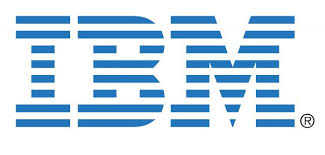IBM Wins 2015 Alliance to Save Energy Chairman's Award
by Wayne Balta

IBM uses energy across its business to deliver products, services and solutions to our clients around the world. In order to be competitive and minimize our environmental impacts, we strive to reduce the energy we consume and the associated carbon dioxide (CO2) emissions as we deliver innovation that matters to our clients. In 2014, IBM reduced or avoided the consumption of 404,000 megawatt-hours (MWh) of energy and an associated 142,000 metric tons (MT) of CO2 emissions, while saving $37.4 million through the execution of over 2,200 energy conservation projects. These energy conservation savings were equivalent to 6.7 percent of IBM’s 2014 energy consumption, exceeding our goal of 3.5 percent.
Based on these results, IBM was presented the prestigious Alliance to Save Energy Chairman’s Award on September 17, 2015. This annual award is given to an individual or organization that has shown exemplary service to the cause of energy efficiency. The award recognized IBM’s long term commitment to energy efficiency in our operations and the results from energy efficiency projects, while taking special note of our efforts to implement leading edge, IT-based systems like TRIRIGA®Real Estate Environmental Sustainability Manager and Chiller Optimization Software.
IBM has been firmly committed to environmental leadership for well over four decades. IBM formalized its energy management program in 1974 and has sustained and enhanced it through the years. From 1990 to 2014, IBM saved 6.8 million MWh of electricity and $550 million through energy conservation actions. While continuing to perform traditional projects for energy conservation, we have been aggressively implementing new analytics-based solutions and other technologies to help us drive continual improvements in energy efficiency in our buildings and data centers.
Over the last 4 years, we have deployed IBM’s Smarter Building technology solution, TRIRIGA®Real Estate Environmental Sustainability Manager (TREES) in over one-third of our global office and manufacturing space; IBM’s Measurement and Management Technology (MMT) in over 60 percent of our data centers; and Chiller Optimization Software (COS) at seven large central chiller plants. Together, the analytics-based solutions contribute 14 percent (58,000 MWh) of our 2014 energy conservation savings. The results:
- Buildings with TREES monitoring their lighting, heating, ventilation and air conditioning, compressed air, cooling tower, water and other systems reduce energy consumption by an average of 10 percent beyond the savings achieved through traditional conservation actions. In 2014 alone, TREES facilitated the reduction of 30,500 MWh of energy consumption and $1.6 million in savings at 28 of our highest energy-consuming locations.
- During 2014, the monitoring data collected by MMT facilitated the shutdown of an additional 120 computer room air conditioning units in our data centers, an average increase of 0.4oC in the inlet temperature of the servers, and a 1 percent improvement in the average data center power usage effectiveness. Data provided by MMT contributed to the 28,000 MWh and $3.6 million in savings generated by cooling use reductions in IBM data centers.
- COS is enabling the integration of chiller units and free cooling systems under a rules-based control system at seven IBM locations. IBM achieved 6,800 MWh and $750,000 of savings in 2014, and annualized savings of 42,500 MWh and more than $4 million from 2011 to 2014.
Through our own operations, we have demonstrated that analytics-based systems represent a powerful energy conservation tool enabling IBM, and its clients, to continuously optimize built infrastructure operations, reduce energy consumption and operating costs, improve reliability, and reduce the environmental impacts of these operations.
Wayne Balta is IBM’s Vice President for Corporate Environmental Affairs and Product Safety.
To learn more about IBM's commitment to environmental protection, see the IBM 2014 Corporate Responsibility Report.
Related Resources:

